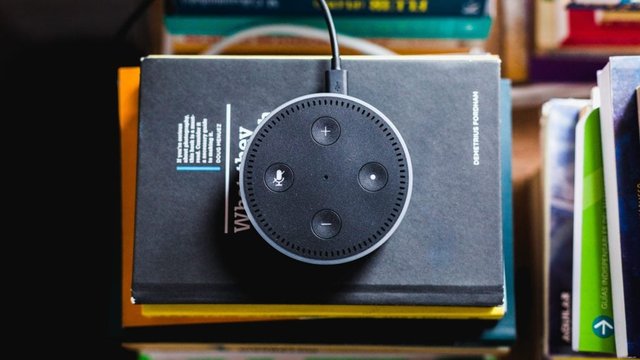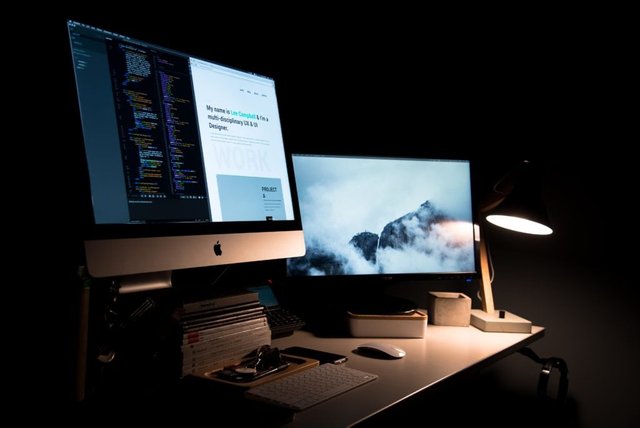The Implications of Voice UI on UX Design Processes

The introduction of Voice User Interface, or VUI, has been changing the way that developers, designers and marketers approach UX design. Moving away from a Graphical User Interface (GUI) to the essentially becoming graphic-less with VUI, designers are having to approach user interaction and experiences with a completely different set of design processes and techniques. As we've already encountered the world of VUI through the AWS Summit 2018, we wanted to take a closer insight into how the designers of today are working with the technology of tomorrow.
So why is VUI so difficult to design?
The contrast of designing for graphic vs vocal interfaces is huge, when considering all of the previous navigation and prompt elements that must be re thought-out or emphasized by only using prompts from the users voice. Where a screen can hold written instructions, visual navigation pointers, and can respond to physical commands, a vocal interface has no such luxury.

Unpredictability: A VUI designer must be able to predict the unpredictable. They must prepare for ‘ums’ and ‘uh huhs’ and long pauses where users get distracted or lose their train of thought. They must be ready for loud voices and quiet voices, accents, different languages and verbal tics and stammers. Whereas a graphical interface can respond to the press of a button, a VUI must wait for a verbal ‘yes’ or ‘no’, which can be communicated in a number of different ways: ‘yeah’, ‘nah’, ‘nope’ ‘yep’, ‘sure’. Colloquialisms are a key feature to factor in when designing a voice activated interface, one that many designers might struggle to handle.
Impracticality of User Research: User Research is a key element in a designers process to ensure they deeply understand who the user is. User research can help guide designers choice appropriate colours, font styles and navigation elements. When it comes to Voice UI, there are new categories to anticipate, mainly voice commands, and numerous scenarios that could change the response of the VUI device. Designers will also have to prepare for a completely new range of user characteristics including differning vocal ranges, position of the VUI device in the home, external noises and planning learnings with frequent vs infrequent users. It becomes a lot harder to anticipate the user journey, when there are so many different outcomes to consider.
Emotional Intelligence and Empathy: One of the most debated features of Voice UI is what level of emotional intelligence their interfaces should present. Whilst HCD (human centered design) is a well known concept for UX design, there is additional pressure from the general public to avoid having the VUI sounding ‘too human’. As many of the devices are described as ‘home voice assistants’, their primary function is to assist and benefit human users which must be maintained through the Voice UI and user interactions. But finding a positive balance of professional enough to be providing essential and necessary information, but also maintaining that human element that allows the device to feel trustworthy is a balance that UX designers are striving to achieve.
Is VUI changing the way that UX designers work?

Firstly, it has to be considered that VUI is still seen as an up and coming technology with companies such as Google, Amazon and Apple leading the way with VUI standards. Officially, the home assistant is still it’s early stages, with Generation Z being one of the first to grow up in homes with voice assistants.
For most designers, VUI is an exciting challenge, one that presents many new opportunities for technology with an element of hands-free activation. Alongside technology with integrated VUI, optic controlled devices, wearable technologies and devices with motion sensor commands are all beginning to be explored, taking the physical hardware out of the picture.
UX designers now have the chance to expand upon their skill set, including VUI design into their portfolio. Their processes and fundamental decision making, which once rested upon ‘how will the user see and touch this’ have now been expanded to include ‘how will the user see, touch, speak to, operate and think about this’ when it comes to their products.
There’s nothing more exciting for a designer than a new product or system completely transforming the way in which you work. But with the opportunities presented by VUI, coming up with new and creative ways of immersing and engaging your audience is an even more exciting challenge.
To find out more about the Voice UI design work that we do here at Roller, drop us a message at [email protected], or check out our socials on Twitter and Instagram!
Posted from my blog with SteemPress : http://rolleragency.co.uk/blog/voice-ui-ux-design/
Nice read. I leave an upvote for this article thumbsup
@rolleragency with the advent of technology giving so much impact to the way of human life, people are continuing to create something extraordinary it is indeed a remarkable work. thanks for sharing.